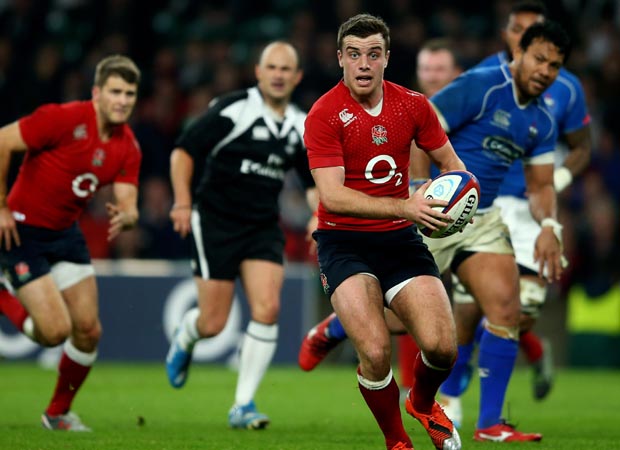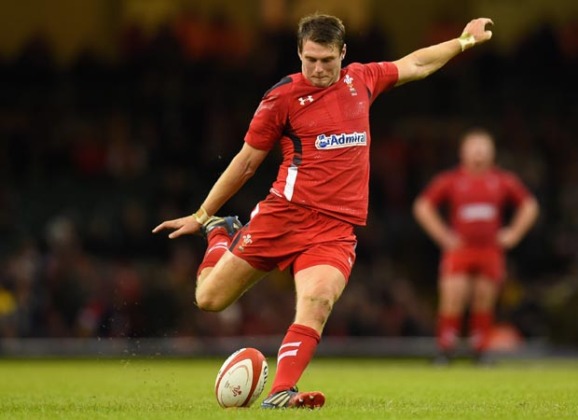 These days it seems to be impossible to make a judgement on any of the Home Union teams without referring to the 2015 World Cup. However, I'm going to buck the trend by looking at the Autumn Internationals as if they were in isolation, because no one knows what will happen 10 months from now.
These days it seems to be impossible to make a judgement on any of the Home Union teams without referring to the 2015 World Cup. However, I'm going to buck the trend by looking at the Autumn Internationals as if they were in isolation, because no one knows what will happen 10 months from now.
What we have to ask ourselves is: what was the likelihood of Northern Hemisphere teams like England and Wales achieving victories over sides that have consistently been above them in the world rankings? Despite the expectation from the public and the media, who cannot help but ramp it up, there is no reason for it to be sky high.
I don't know how many neutrals expected England to beat New Zealand, or South Africa, even though the overall scorelines made those matches look very close.
England showed why they were ranked fourth because against the All Blacks they were unable to finish their first-half opportunities, and the reason they were not in the top three was emphasised when they failed to apply pressure against 14 men midway through the second half.
However, I was encouraged by the last game against Australia because the preparation by the England coaches was on the money. It was a simple, basic game against the Wallabies based on a dominant set-piece and generating quick ball from second phase, and it suited this England team.
The first England try against Australia is what they have to strive for more often. Brad Barritt took a very good line, and then showed just how important it is to get quick ball back from the breakdown. The line that Tom Wood took meant that he had to call for the ball and then deliver the pass to Ben Morgan at pace.
The England No.8 also picked a good running line and carried three men over with him. Morgan's try showed that England don't have to be any more ambitious than that, as long as they can get quick ball from everywhere, whether set-piece or in the loose.
England showed against Australia that the scrum is a huge attacking weapon again, and can be used not just to win penalties, but as a launchpad for tries.
George Ford demonstrated during this autumn that he is a fly-half who has ‘the feel'. To me it means that he can feel the slack in the defence – it is about seeing or sensing whether the wing is too far up, or the full-back out of position, or even if they are in position then the accuracy of his kick allows his chasers to put defenders under pressure.
Rugby is about being pragmatic. For instance, if there is a high ball then you use your best chasers and catchers to challenge for it. If Mike Brown is the best at doing it – better, say, than Billy Twelvetrees and Brad Barritt – then you put him in the centre to chase and send a winger to cover for him at full-back.
The same thinking should apply to how Bath and England get the best out of Sam Burgess. He is best used anywhere where he can carry most destructively, which means primarily at 12, although he should come into the line wherever he can do most damage.
My autumn verdict is that at home next year England will be capable of beating any other side, and I don't believe they are that far away from being able to beat New Zealand or South Africa at the moment.
England are not the No.1 ranked side in the world as they were in the build-up to 2003, but they definitely have not gone backwards over the last month.
England's lineout and scrum is superb, and the addition of Ford gives them more options and accuracy to make the most of quick ball – and even slow ball. Ford has the capacity to make the most of what comes his way, but if he gets quick ball he will be very direct.
Ford deserves a period of being allowed to bed-in at fly half, but at some stage he will have a blip, like missing an important kick. How Stuart Lancaster reacts to that will be very significant in England's development.
Another plus is that Chris Robshaw has proved that he is a very good player who is also very consistent. Having two No.6s in the back-row is not the worst option, although England will progress more if Robshaw wins more turnovers.

The permutations at centre don't matter hugely because the criticism of England not being creative enough is wrong – they just have to execute what they do very precisely.
That is why, talented and beautifully balanced as Kyle Eastmond is, he will struggle to have a big impact because England need runners who get them over the gain-line. If you have big wings like Julian Savea, George North or Alex Cuthbert, then a centre like Eastmond comes into his own. But if, like England, you have lighter wings like Jonny May and Anthony Watson, then you rely on your midfield carriers for momentum – and the simplest way for England to generate it is to get big centres to smash over the gain-line.
England are better suited to direct, hard-running centres who hit space and offload. Bath's 10-12-13 lineup of Ford, Eastmond and Jonathan Joseph is a different way of playing, based more on speed. There should always be a place for someone of Eastmond's ability, but, at the moment he is out of luck.
Wales, like England, have found a fly-half, with Dan Biggar maturing into a fine player. He knows how to govern the game, and, like Ford, he has a footballer's feel – a vision you cannot coach. It is instinctive.
A lot has been made of Biggar's bravery in defence against the Springboks, but for me it's a given. Tackling is doing your job. However, Wales have been looking for a fly-half for so long, and at last they seem to have found one.
You sense that the big change will happen for Wales in attack when Leigh Halfpenny is involved more. He's got pace, and if Wales harness his talent properly then an already potent backline will be more dangerous still.
Other plusses for Wales are that Samson Lee has stepped up at tight-head, showing that you don't have to be 30 to be an international prop, and that in the back-row Sam Warburton and Toby Faletau are getting back to their best.
Faletau has so much more to offer at No.8, because if you give him the ball in space he's explosively fast and strong. Warburton is a very good player, and he just needs game time. If Warburton gets an early turnover then he's in the game, and he generates energy for himself and his teammates. He is a quality player.
As for who had the better autumn, England or Wales, we will know more in Cardiff in two months' time.
*This article was first published in The Rugby Paper on December 7.


























